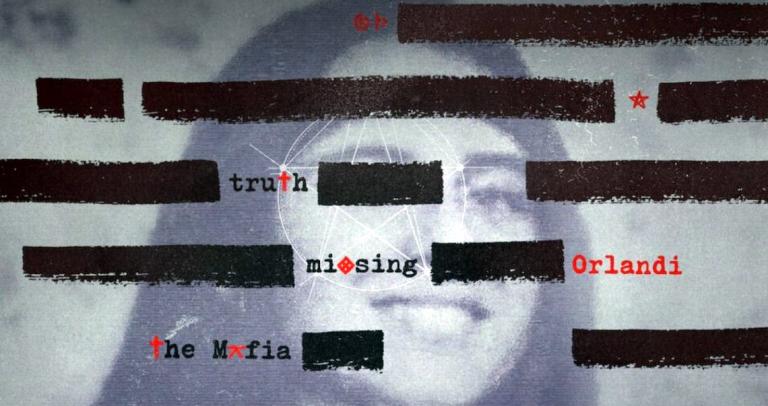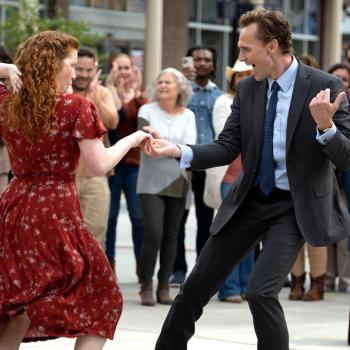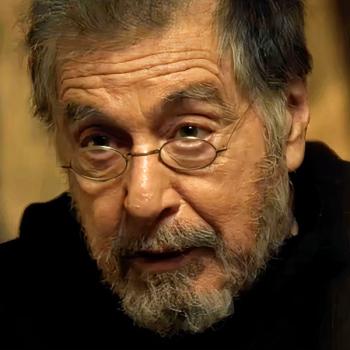
“They know more than they are telling.”
This phrase or one like it permeates many missing-persons cases. Sometimes it’s true; sometimes it’s just a thread of hope to make sense of the senseless. And the notion of secret cabals and conspiracies are often the lifeblood of true-crime documentaries … like Netflix’s Vatican Girl.
The four-episode docu-series premiered in October, and there have been recent real-world developments. But first, there’s a lot of background.
The Disappearance of Vatican Citizen Emanuela Orlandi
It’s indisputable that 15-year-old Emanuela Orlandi vanished from central Rome on June 22, 1983, after her older brother, Pietro, declined to take her to a flute lesson. Her father worked in the Vatican, and the Orlandis were among the few lay people to live in the Vatican and to hold Vatican citizenship.
Here’s the basic facts, from a deep dive in the Toronto Star:
On June 22, 1983, Emanuela spent the afternoon buying ingredients for the pizza she had asked her mother to make for supper. Then she stuffed her flute in a backpack and begged her older brother Pietro for a lift to her 5 p.m. music lesson. He refused, and regrets it to this day.
She left the family apartment on Via Sant’Egidio wearing a white T-shirt, denim overalls and running shoes. She hopped on a bus, travelled 2 kilometres and got off near Piazza Navona. In front of the Italian Senate, she was stopped by a young man in a green BMW. A traffic officer and a constable witnessed the scene. The Senate’s security cameras weren’t working that day.
Emanuela then walked another block to Piazza di Sant’Apollinare. Her lesson was in a building attached to Sant’Apollinare church, now run by the conservative Opus Dei movement. At 7 p.m., when her lesson finished, she called home. She told her sister that a man had offered to pay her almost $200 to distribute pamphlets for Avon products at a two-hour fashion show that weekend. She was to give him an answer that evening after asking her parents, but her sister told her they weren’t home.
That was the last the family heard of Emanuela. She had an appointment with another sister at 7:30 p.m. in a nearby piazza but never showed up.
There were some apparently credible calls made to the family in the near aftermath of the disappearance, leading police to some bits of credible evidence, but no monetary ransom demand was ever made. Also, there has been no verifiable proof of life since Emanuela disappeared — no video, film, photo, phone call or voice recording.
There exists no hard evidence of what happened to Emanuela or why. No one has ever been arrested, let alone charged or tried.
Vatican Girl Works Its Way Through All the Theories
Over four hours, Vatican Girl sifts through wild happenings and theories surrounding the case. They’re too labyrinth to go into here, but briefly, they involve claims of KGB involvement in Turkish assassin Mehmet Ali Ağca’s 1981 shooting of Pope John Paul II; JPII’s efforts to boost Catholicism in Poland (not Russia, as the documentary keeps stating, since Russia has always been primarily Orthodox); the Banco Ambrosiano scandal of the 1980s (which embroiled Vatican finances); and the Roman Mafia.
All of these are connected to some notion of blackmail, primarily of the Vatican.
Along the way, there’s a man named Marco Accetti, who claimed to have made calls to the Orlandi family and to have kidnapped Emanuela. Pietro Orlandi even confronted him on Italian TV. Accetti appears in the docu-series wearing a mask, even though his face can be seen in the TV footage. He has a long criminal history but hasn’t been arrested for Emanuela’s disappearance.
There are relatively few law-enforcement or government officials interviewed. It’s mostly Italian journalists, legal representatives, family members and alleged witnesses, including a former Mafia mistress.
In 2008, this woman, Sabrina Minardi — who has her own criminal history and longtime struggles with substance abuse — connected Emanuela’s kidnapping to her Mafia-boss boyfriend and a Vatican archbishop, the former head of the Vatican Bank (which takes us back to the Banco Ambrosiano scandal).
Her story wavers between credible and melodramatic, and both the Orlandi family and investigators were intrigued by some details but dismissive of others.
And, there’s a Roman teen girl who was also abducted around the same time, but she’s apparently far less interesting to the filmmakers than Emanuela, probably because she doesn’t have Vatican connections.
All this theorizing ultimately comes to nothing, and the docu-series predictably concludes in episode four with throwing shade on the Vatican itself.
The centerpiece of the last episode is a new (and anonymous) witness– speaking publicly for the first time in many decades, she says — who claims her teen friend Emanuela said she had been “bothered” by a cleric, maybe a cardinal, in the Vatican Gardens.
In the End, All Theories Lead to the Vatican (Of Course)
Along the way, Vatican Girl goes overboard in its attempt to make this whole bizarre saga look and sound like a Dan Brown potboiler. Ultimately, the only notion that the docu-series doesn’t shut down is the idea that the secret to Emaneula’s fate resides in the bowels of the Vatican.
Then came the 2016 Vatileaks scandal, in which the late Pope Benedict XVI’s butler stole sensitive papal documents, that showed up in his apartment.
In the docu-series, a journalist presents a photocopy of a supposed Vatican document, received from an unnamed source, that purports to show a catalog of expenses for supporting Emanuela for many years after her disappearance.
So, What Do I Think?
First of all, in the short time I wrote about Vatican news, I discovered that, as unreliable as the U.S. media can be, it can’t hold a candle to Italian media. No doubt there are good journalists working in Rome, but I wouldn’t hang my hat on local news reporting there.
Second, most (but not all), of the theories, phone calls, claims, red herrings, suspects, etc., popped up after Emanuela’s disappearance was reported. They feel like opportunists seizing the moment to make mischief and gain notoriety.
Third, anything connected to the Vatican is, to use a term of art in journalism, sexy. It gets people interested. So, whatever you do in talking about any subject connected to it, you’re going to want to keep the focus on the Vatican.
For many people in media, the Vatican is a kind of boogeyman, a shadowy organization behind all sorts of shady goings-on in the world, with secret vaults stuffed full of answers to all the world’s mysteries. When linked to anything, it draws — rightly or wrongly — the bulk of the attention.
Was the Vatican involved in Emanuela’s disappearance? I have no idea. But her connection to the place is a big chunk of why we’re still talking about this case today.
Does Emanuela’s Case Merit Decades of Attention?
It’s in the nature of human psychology to deeply sympathize with attractive, vulnerable young women and girls who vanish or come to violent ends. This is intensified when they’re not from backgrounds or places where violence is a part of daily life.
Lots of people go missing or are murdered, but only a few capture the interest of journalists or the public imagination. It’s not fair or right, but it happens.
The truth of this particular girl’s story may be tragic, but far less earth-shaking than the theories suggest. Emanuela may have been tricked into going with sexual predators, who abused and murdered her and then effectively disposed of the body.
This happens every day around the world, and it’s usually not linked to globe-spanning conspiracies, but just pure human evil.
I tend to stand with Rome’s public prosecutor, Giancarlo Capaldo, who was quoted in the Toronto Star:
Capaldo insists on only one reasonable conclusion: “We believe the girl is dead.”
The kidnapping has taken on epic proportions, he says, because bits of truth are found in all the scenarios. He notes, however, that his investigation has come across many instances of girls kidnapped and killed in ugly yet banal circumstances.
“Emanuela Orlandi is a case in which we find everything,” he says. “But the more there is, the harder it is to find the truth. It’s possible that, probably, the reality is much simpler, a simple reality that almost gets buried by all these things that are more fascinating. And a legend is created.
“I think Emanuela Orlandi perhaps represents a characteristic of our country: we dig so deeply to find the truth that often we distance ourselves from it.”
Vatican Girl Sparks New Interest and Movement in the Case
However, the Vatican has taken note of the interest in the case that Vatican Girl has revived, along with the ongoing agony and pleas of the Orlandi family.
From a Jan. 9, 2023, story at Catholic news website Crux:
Vatican spokesman Matteo Bruni confirmed the news to Crux, saying the Vatican’s Promotor of Justice, Alessandro Diddi, “has opened a file in response to requests made by the family in various settings.”
The news was first reported by Italian agency Adnkronos, which stated that Diddi and the Vatican Gendarmes intend to re-examine all files, documents, reports, and testimonies that have come in over the past 40 years in hopes of clarifying lingering questions and putting a definitive end to the speculation that has surrounded the case almost from the beginning.
Work will begin with information gathered during the official proceedings, and will both follow new leads and reexamine ones that lacked necessary details at the time they came in, going over every single detail on file from the afternoon of June 22, 1983, when Orlandi disappeared, until today.
Also, as reported by the AP:
Opposition lawmakers in Italy are seeking a parliamentary commission of inquiry into three cold cases that have consumed the Italian public’s imagination for decades, including the 1983 disappearance of a 15-year-old that was highlighted in the Netflix documentary, “Vatican Girl.”
The aim of the inquest, said Sen. Carlo Calenda, would be to pressure the Vatican to finally turn over everything it knows about Emanuela Orlandi’s disappearance to Italian law enforcement authorities, saying its longstanding official claim of ignorance was “hardly credible.”
“We are a great secular nation that treats the Vatican with respect, but this case certainly cannot be considered closed in this way,” Calenda said Tuesday at a news conference announcing the proposed commission.
We May Never Know — But We May
As Christ said, in Mark 4:22:
For there is nothing hidden except to be made visible; nothing is secret except to come to light.
For the sake of the Orlandi family, I hope the truth of Emanuela’s disappearance comes to light in their lifetime.
Image: Netflix
Don’t miss a thing: Subscribe to all that I write at Authory.com/KateOHare














